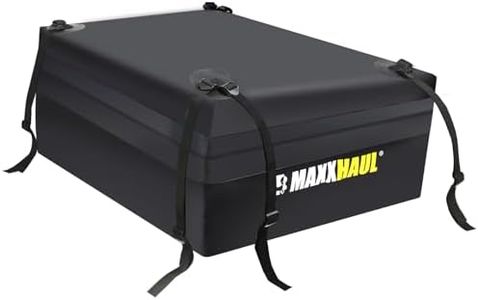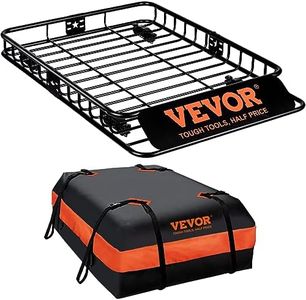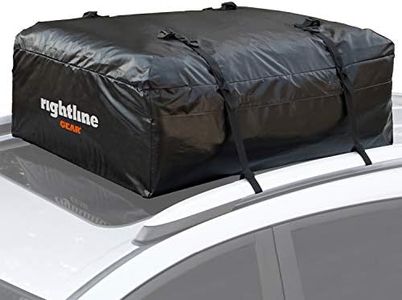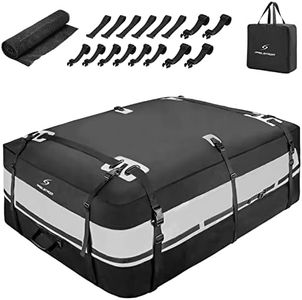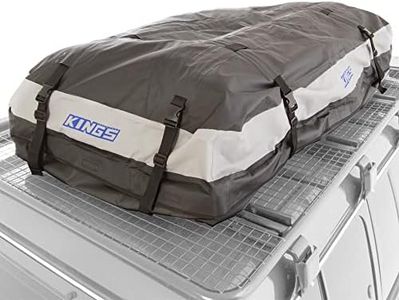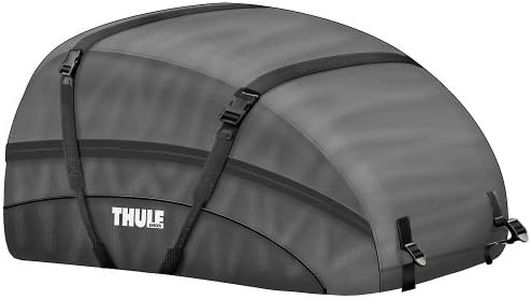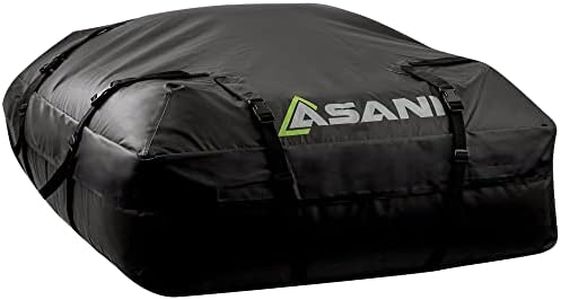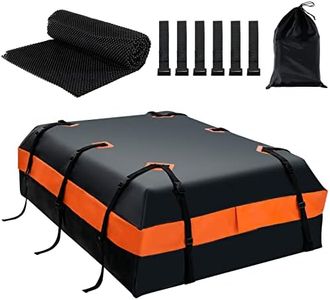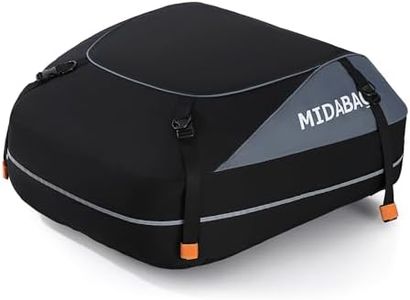We Use CookiesWe use cookies to enhance the security, performance,
functionality and for analytical and promotional activities. By continuing to browse this site you
are agreeing to our privacy policy
10 Best Hard Top Cargo Carriers
From leading brands and best sellers available on the web.Buying Guide for the Best Hard Top Cargo Carriers
Choosing the right hard-top cargo carrier for your car can make traveling with extra luggage, sports equipment, or camping gear much easier and safer. The best approach is to first think about how you plan to use it—occasional road trips, regular family vacations, or specific activities like skiing or camping. Use your car's owner manual to check compatibility and always measure your vehicle's roof, including existing racks. By focusing on key specs like capacity, size, aerodynamics, material, opening mechanism, and security, you can narrow down your choices to find a carrier that fits both your needs and your car.CapacityCapacity refers to how much stuff the cargo carrier can hold, usually measured in cubic feet or liters. Capacity is important because it determines how much extra luggage you can bring along. There are generally small (10-14 cubic feet), medium (15-18 cubic feet), and large (19+ cubic feet) carriers. Smaller carriers suit solo travelers or couples who pack light, medium ones are good for families or longer trips with moderate gear, and large carriers are best for big families or activities requiring bulky equipment. Choose capacity based on your usual travel group size and what you typically need to transport.
Size and DimensionsThe physical size of a cargo carrier (its length, width, and height) determines not only how much it can fit but also if it will fit your vehicle and garage. It’s vital because a carrier that’s too big may hang over your windshield or rear hatch, block antennas, or make it impossible to open your trunk. Look for carriers that fit within your vehicle’s roof space and won’t interfere with access to rear cargo doors. Measure your car’s roof and account for garage clearance—pick a size that matches both your car and your storage needs.
AerodynamicsAerodynamics is about how well the cargo carrier is designed to reduce wind resistance. This is important for fuel efficiency and noise levels while driving. Sleeker, lower-profile carriers reduce wind drag, are quieter on the highway, and have less impact on gas mileage. More boxy designs can create more noise and drag, but sometimes offer more storage for taller items. If you do a lot of highway driving or care about fuel economy, choose a more streamlined option.
Material and Build QualityThe material and build quality affect the carrier’s durability, weather resistance, and overall lifespan. Most carriers are made of strong plastics like ABS or polycarbonate, which are weatherproof and lightweight. Thicker, more robust builds withstand tough weather and sun exposure, but may be heavier. For frequent or long-term use, look for high-quality materials; for occasional light travel, a standard durable plastic will do.
Opening MechanismThe opening mechanism describes how you access the carrier—whether it opens from one side, both sides, or from the rear. This matters for convenience, especially when loading and unloading. Single-side opening is simple but could be tricky if parked close to a wall. Dual-side opening provides more flexibility, allowing you to access the carrier from either side of the car. Consider how and where you usually park and load luggage to decide which mechanism suits you best.
Security FeaturesSecurity features include things like built-in locks, reinforced latches, and the ability to lock the carrier to your roof rack. Security is important to keep your belongings safe from theft and prevent accidental openings on the road. Some carriers have central locking, meaning one lock secures all points, while others have multiple locks. Pick a model based on how valuable the contents are and whether you often leave gear unattended in public parking areas.
Mounting System CompatibilityThe mounting system describes how the cargo carrier attaches to your vehicle’s roof rack. Compatibility is critical so you can safely secure the carrier to your particular rack style (rails, crossbars, or fixed points). Some mounting systems are tool-free and quick, while others take more time to attach or adjust. Always confirm that the carrier will fit your vehicle’s rack, and if you plan to change cars, a versatile mounting system can be worth it.
